Best Linux Distros in 2022 for Beginner, Experienced and Proficient users.
Are you searching for the best Linux distro (distribution) for your desktop computer or laptop to accept you into 2022? This commodity will guide you to what I believe are the best Linux distros for beginner, experienced, and expert users. Whether yous are a power user or just getting your anxiety wet, there are indeed specific Linux distros best suited for you.
My Best Linux Distro 2022 – Popular!_OS + Popular Shell
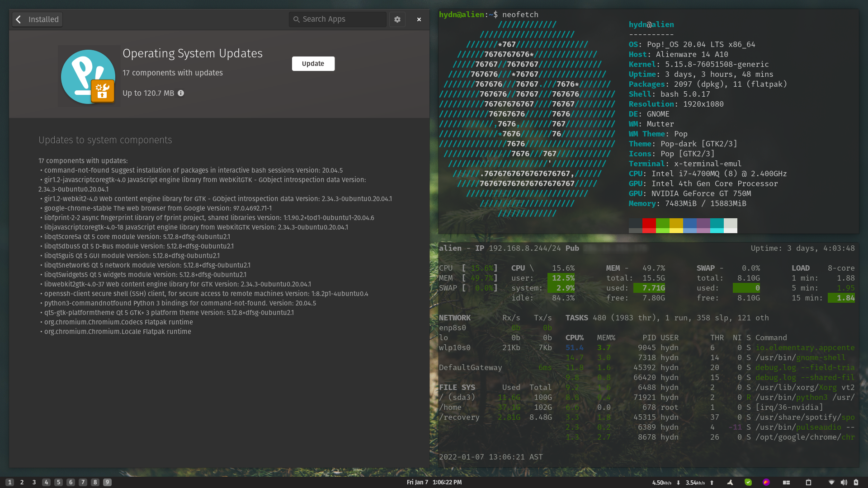
My electric current all-time Linux distro for 2022 = Pop!_OS + Pop Shell
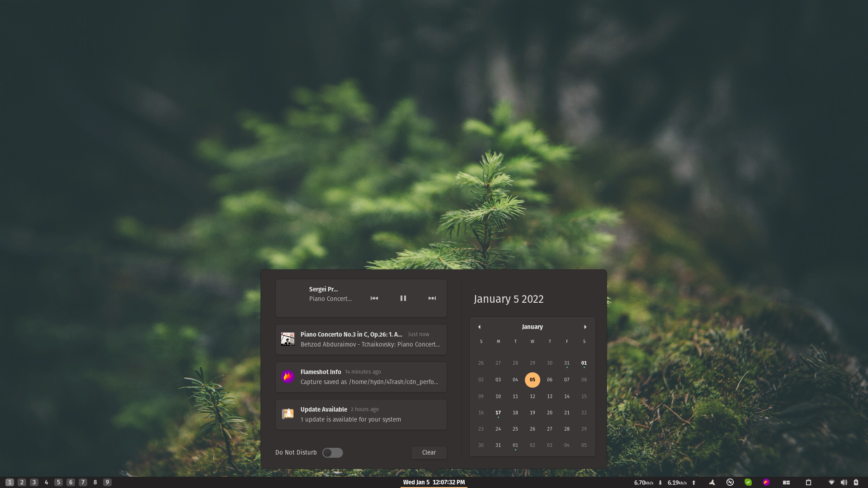
Some other screenshot of my current all-time Linux distro = Pop!_OS + Pop Shell
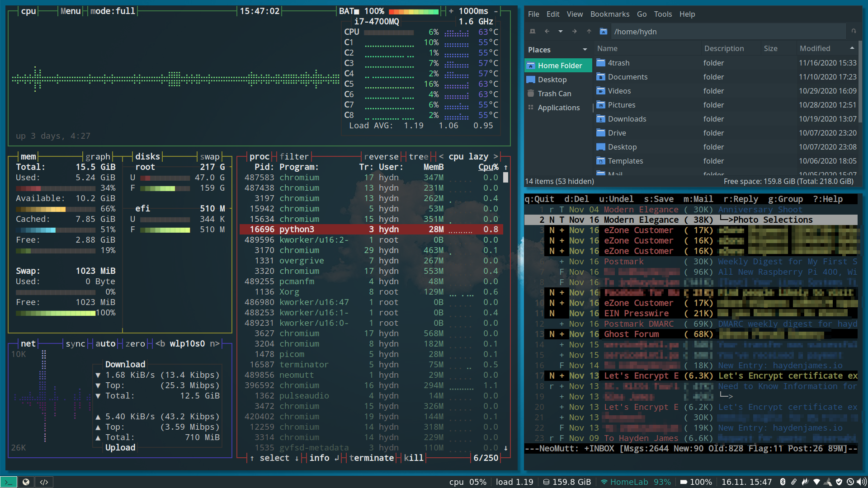
My previous best Linux distro (and window director) of 2021 = Manjaro i3.
The first rule to recall here is that there will be "the best Linux distro for me" (Ubuntu xx.04 LTS 2021 u pdate: Manjaro i3 2022 update: Popular!_OS + Pop Beat out) but likewise "the all-time Linux distro for you." What you consider to be the best Linux Distro now volition often change over time to match your experience level and other irresolute factors. This is why I update this post several times throughout each year.
With this in mind, let's begin breaking down the hunt for your best Linux distro into three categories:
Beginner, Experienced, and Expert. (newly listed in green)
Best Linux Distros for Beginners
For users who want quick access to Linux and an all-encompassing array of software/apps without having to utilise the command line. Or, maybe you seek an easy way to give Linux a try. For those users, I would recommend:
- Manjaro – a user-friendly, desktop-oriented operating system based on Curvation Linux. Key features include an intuitive installation process, automatic hardware detection,stable rolling-release model, ability to install multiple kernels, special Bash scripts for managing graphics drivers, and all-encompassing desktop configurability. (See screenshot above)
- Ubuntu – a complete desktop Linux operating system, freely available with thelargest customs support of whatever Distro. Ubuntu offers a beginner-friendly download folio with large text, highlighting the nearly important things for new users, such equally system requirements, live USB guide, and how to switch from Windows or Mac.
- Pop!_OS – another Ubuntu-based Linux distribution featuring a custom GNOME desktop. System76, a Linux figurer retailer, develops this Linux distro. Popular!_OS makes this list because they take gone out of their manner to ensure that this distro is beginner-friendly by offering 100'due south of informative videos and a growing listing of aid articles. (See screenshots higher up)
- Linux Mint – a Ubuntu-based distribution whose goal is to providea complete out-of-the-box experience past including browser plugins, media codecs, support for DVD playback, Java, and other components. Information technology too adds custom desktop options and menus, several unique configuration tools, and a web-based package installation interface. Linux Mint is compatible with Ubuntu software repositories.
Notable mentions: Elementaryos.org, MX Linux and ZorinOS.
Best Linux Distros for Experienced users
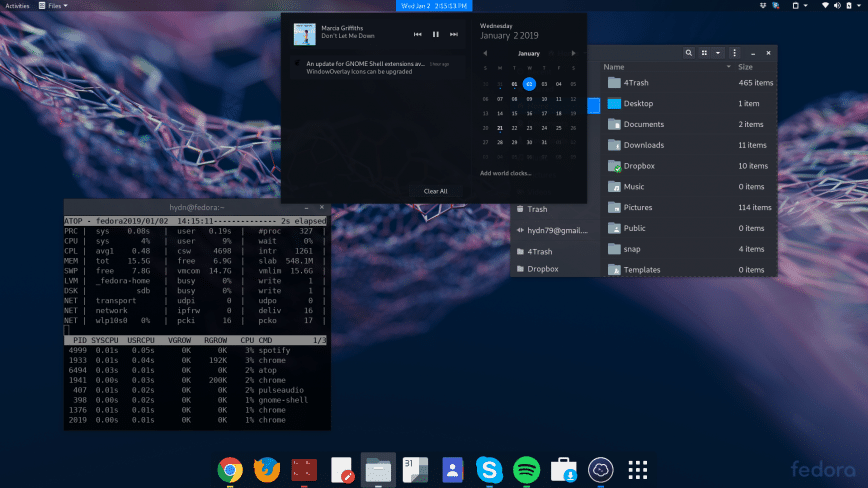
The following distros are very like to those higher up. However, the default install does non include as much bloat. This requires a bit more customization and research. This shouldn't exist difficult or frustrating, but instead satisfying.
- Fedora – (formerly Fedora Cadre) is a Linux distribution developed by the community-supported Fedora Project. An upstream source of the commercial Cerise Hat Enterprise Linux distribution. Fedora contains free and open-source license software packages and aims to be on the leading border of technologies while working closely with upstream Linux communities. Fedora Project also distributes Fedora'southward custom variations called Fedora 'spins' for gaming, security, blueprint, scientific calculating, robotics, etc. Fedora's short version life bike means that parcel updates are frequent. This may exist scary to some or satisfying to others who enjoy using the latest software.
- Debian – Of course, the common thing that people want is application software. Debian gives you easy access to these without pre-installing them.Debian comes with over 60,000 packages (pre-compiled software that is bundled up in a friendly format for like shooting fish in a barrel installation on your automobile) – all of it free. Add together some claiming, install Debian Testing or Debian SID.
- openSUSE – The openSUSE project has iii main goals: make openSUSE the most accessible Linux for anyone to obtain and the about widely used Linux distribution; leverage open source collaboration to make openSUSE the earth's most usable Linux distribution and desktop surroundings for new and experienced Linux users; dramatically simplify and open up the development and packaging processes to make openSUSE the platform of pick for Linux developers and software vendors. openSUSE also at present offers the Tumbleweed rolling release distro.
- Solus – a relatively new Linux distribution built from scratch. Solus a very focused arroyo to desktop editions: Solus Budgie, Solus Gnome, Solus Plasma, and Solus Mate. That said, their Budgie Desktop has grown apace in popularity and is one of the all-time all-around desktop environments you'll have the opportunity to kicking into.
Notable mention: AntiX – a fast, lightweight, and easy-to-install Linux distro.
Best Linux Distros for Experts
The following distributions focus on being lightweight, simple, and notwithstanding far more than flexible than almost. Right from the install procedure, you'll notice that these distros will only install what you lot explicitly command them to.
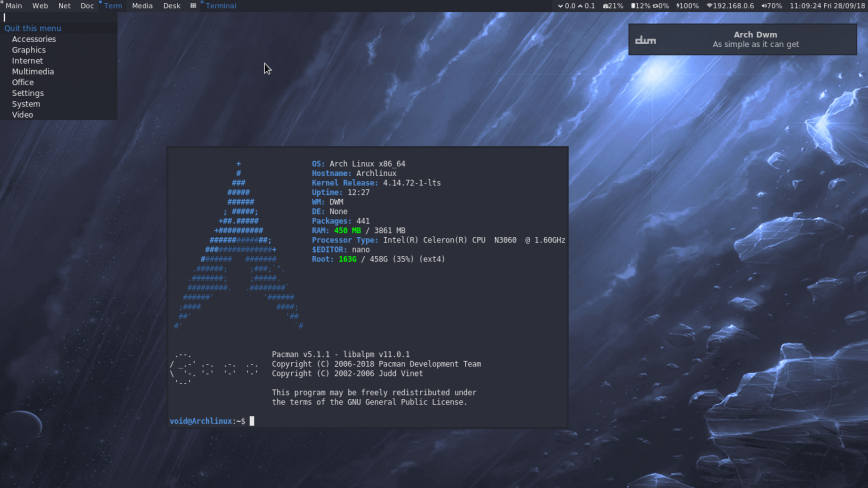
- Arch Linux – an independently developed Linux distribution targeted at competent Linux users. It uses pacman, its home-grown package manager, to update the latest software applications with full dependency tracking. Arch can be installed from a CD image or via an FTP server operating on a rolling release arrangement. The default install provides a solid base that enables users to create a custom installation. The Arch Build System (ABS) also provides a manner to easily build new packages, modify the configuration of stock packages, and share these packages with other users via the Curvation Linux user repository. (used Curvation for some fourth dimension likewise, see above screenshot)
- Gentoo – a versatile and fast Linux distribution geared towards developers and network professionals. Gentoo Linux has anadvanced packet management system called Portage. Different a binary software distribution, the source code is compiled locally according to the user'south preferences and is oft optimized for the specific computer type. The name was chosen to reflect the potential speed improvements of machine-specific optimization, a major feature of Gentoo. Gentoo parcel management is designed to exist modular, portable, easy to maintain, and flexible.
- Slackware – an advanced Linux operating system designed with the twin goals of ease of use and stability as top priorities. Including the latest popular software, while retaining a sense of tradition, providing simplicity and ease of employ alongside flexibility and power, Slackware brings the all-time of all worlds to the tabular array. Originally developed in 1991, the UNIX-like Linux operating system now benefits from the contributions of millions of users and developers around the world. Slackware Linux provides new and experienced users alike with a fully-featured arrangement, equipped to serve in any capacity from desktop workstation to machine-room server. Spider web, FTP, and email servers are ready to get out of the box, every bit are a wide selection of popular desktop environments. A full range of development tools, editors, and current libraries is included for users who wish to develop or compile additional software.
Finish
Bonus Distros
- If low-end hardware specs constrain yous, give the following lightweight Linux distros a try: Lubuntu, EndeavourOS, and Linux Lite.
- Kali Linux stripped install – aDebian-based rolling release distribution without penetration testing tools. It features timely security updates, supports ARM architecture, a choice of iv popular desktop environments, and seamless upgrades past way of rolling releases. Kali Linux is geared to meet the requirements of professional penetration testing and security auditing.
Due to the nature of security audits, Kali Linux, by default, will install with a "single, root user." …NOT recommended.Update: Kali Linux now defaults to non-root install. Every bit such, I've moved this distro upward from the bonus section as this setup has always been one of my favorites. Now Kali has only made the not-root install process default. Kudos to them! If y'all are installing Kali for penetration testing, and then see their website. However, if you would like an alternating install thatdoes Non install with root login and(now by default) and does NOT install penetration testing tools, try this custom install without root for a rolling release Debian managed by Kali.
Notable mention: Linux from scratch – Not a distro, but a challenging project that provides you lot with stride-past-pace instructions for edifice your ain custom Linux system, entirely from source code.
Conclusion
I truly hope this quick guide for beginners proves helpful. Most of the distro descriptions are directly from Distrowatch – a handy website for your research. Arch and Ubuntu screenshots from /r/unixporn. What's your pick for the best Linux distro? Related reading: Best Linux server distributions.
Tags: arch linux, debian, desktop, distro, linux
DOWNLOAD HERE
Posted by: fradysurne1936.blogspot.com
Post a Comment